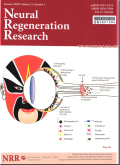摘要hTe glial regenerative response to central nervous system (CNS) injury, although limited, can be harnessed to promote regeneration and repair. Injury provokes the proliferation of ensheathing glial cells, which can differentiate to remyelinate axons, and partially restore function. hTis response is evolutionarily conserved, strongly implying an underlying genetic mechanism. In mammals, it is elicited by NG2 glia, but most otfen newly generated cells fail to differentiate. hTus an important goal had been to ifnd out how to promote glial differentiation following the proliferative response. A gene network involving Notch and prospero (pros) controls the balance between glial proliferation and differentiation in lfies and mice, and promotes CNS repair at least in fruit-lfies. A key missing link had been how to relate the function of NG2 to this gene network. Recent ifndings by Losada-Perez et al., published in JCB, demonstrated that the Drosophila NG2 homologue kon-tiki (kon) is functionally linked to Notch and pros in glia. By engaging in two feedback loops with Notch and Pros, in response to injury, Kon can regulate both glial cell number and glial shape homeostasis, essential for repair. Drosophila offers powerful genetics to unravel the control of stem and progenitor cells for regeneration and repair.
更多相关知识
- 浏览98
- 被引0
- 下载0


相似文献
- 中文期刊
- 外文期刊
- 学位论文
- 会议论文



 换一批
换一批 换一批
换一批



